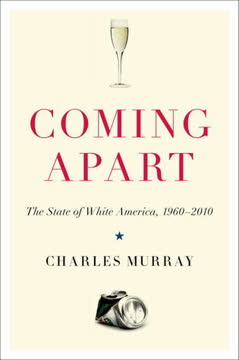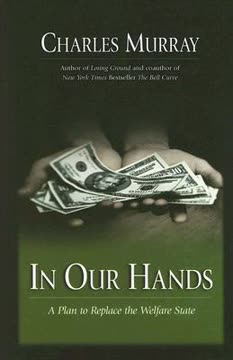Key Takeaways
1. The American Project's Bedrock: Founding Virtues.
The American Constitution is remarkable for its simplicity; but it can only suffice a people habitually correct in their actions, and would be utterly inadequate to the wants of a different nation.
Virtue as foundation. The American founders understood that the success of their experiment in self-governance depended not just on laws, but on the moral character of its citizens. They believed that a free society required a virtuous populace, capable of self-governance at an individual level. Without this internal moral compass, no external checks or governmental structure could secure liberty.
Four core virtues. While various virtues were discussed, four were universally accepted as essential for the nation's success:
- Industriousness: A deep-seated drive for hard work and self-improvement.
- Honesty: Upholding integrity, keeping one's word, and respecting the law.
- Marriage: The bedrock institution for raising children and organizing society.
- Religiosity: Essential for morality and civic life, fostering social capital.
These "founding virtues" were seen as indispensable for a free people to thrive.
Historical consensus. From the founders through 19th-century observers like Tocqueville and Grund, there was a broad consensus that America's unique civic culture, characterized by neighborliness and voluntary associations, stemmed directly from these virtues. This shared understanding of what it meant to be a "good American" was relentlessly socialized through institutions like schools, shaping a national civil religion.
2. 1963: The End of a Unified American Culture.
The symbolic last day of the culture that preceded it was November 21, 1963.
A cultural watershed. November 21, 1963, the day before JFK's assassination, serves as a symbolic marker for the end of a relatively unified American culture. Before this date, despite existing problems like racial segregation, American society exhibited a remarkable degree of shared norms and values across socioeconomic lines. This included consistent views on family structure, work ethic, and public morality.
Homogeneity in daily life. Life in 1963 was characterized by a surprising lack of variety and a simplicity that now seems quaint.
- Media: Limited television channels, a single Top 40 music list, and scarce bookstores meant shared cultural experiences.
- Consumerism: American-made cars dominated, and dining options were far less diverse.
- Social norms: Marriage was nearly universal, divorce rare, and mothers predominantly stayed home.
These shared experiences fostered a common understanding of "the American way of life."
Seeds of change. While the assassination itself was a catalyst, many transformative shifts were already underway. The birth control pill, intensifying civil rights movement, and nascent feminist and environmental movements were poised to reshape American society. The baby boomers were also coming of age, a demographic pig in the python, whose sheer numbers would amplify cultural shifts.
3. The New Upper Class: Cognitively Elite and Isolated.
America’s new upper class is new because its members have something in common beyond the simple fact of their success.
Emergence of a distinct class. Since 1963, a new American upper class has formed, qualitatively different from any before. Unlike past elites, whose members might have diverse backgrounds, this new class shares common backgrounds, tastes, preferences, and culture, increasingly constituting a cohesive social group. This group includes the "narrow elite" (top decision-makers) and the "broad elite" (successful professionals and managers).
Foundations of the elite:
- Market value of brains: The high-tech economy and complex business decisions dramatically increased the value of exceptional cognitive ability.
- Enabling wealth: Surging incomes for top professionals allowed them to afford distinct lifestyles and residential segregation.
- College sorting machine: Elite universities became magnets for the cognitively gifted, concentrating talent.
- Homogamy: Highly educated, high-IQ individuals increasingly marry each other, perpetuating the elite across generations.
Cultural divergence. This new upper class has developed a distinctive culture, visible in lifestyle choices and family life. They prioritize health and fitness, consume specific media (e.g., NPR, New Yorker), and engage in intense, planned child-rearing. Their workplaces are often reinvented to maximize creativity, offering flexibility and perks largely absent in mainstream jobs.
4. The Elite Bubble: Ignorance of Mainstream America.
It is a problem if Yale professors, or producers of network news programs, or CEOs of great corporations, or presidential advisers cannot empathize with the priorities of truck drivers.
Growing isolation. The new upper class is increasingly isolated from mainstream America, not just geographically but culturally, economically, and educationally. This isolation leads to a profound ignorance about the daily lives, priorities, and challenges of ordinary Americans, posing a significant risk for national decision-making.
Residential segregation (SuperZips). The affluent and highly educated increasingly cluster in "SuperZips"—zip codes in the top 5% for combined education and income. These areas are:
- Demographically distinct: Overwhelmingly white and Asian, with minimal black or Latino populations.
- Socioeconomically homogenous: Residents are highly educated, affluent, and exhibit strong social indicators (e.g., high marriage rates, low crime).
- Geographically buffered: SuperZips often form large, contiguous clusters, further insulating residents from diverse socioeconomic realities.
The "OES" syndrome. This isolation fosters an "overeducated elitist snob" (OES) syndrome, where members of the new upper class quietly believe in their intellectual and moral superiority. They may be self-deprecating about their preferences but often hold disdain for those outside their cultural sphere, particularly regarding lifestyle choices like diet, media consumption, and leisure activities.
Consequences of ignorance. This lack of direct experience with mainstream life means the elite often makes judgments and policies based on their own atypical lives. They may not understand the commonalities of life for most Americans—like sending kids to local public schools, working diverse jobs, or eating at affordable restaurants—leading to a disconnect that undermines effective governance and national unity.
5. The New Lower Class: A Decline in Core Behaviors.
In the years after 1960, America developed something new: a white lower class that did not consist of a fringe, but of a substantial part of what was formerly the working-class population.
Beyond the fringe. Historically, the "lower class" among whites was a small fringe of society. However, since 1960, a new white lower class has emerged, comprising a significant portion of the former working class. This group, exemplified by the fictional "Fishtown," increasingly deviates from the traditional American expectations of respectable behavior and the founding virtues.
Quiet deterioration. Unlike the visible counterculture of the 1960s or the publicized "underclass" of the 1980s, the growth of this new lower class occurred quietly. Its members often struggle with:
- Economic ineffectualness: Many men are not "making a living" (earning enough to keep two adults above the poverty line).
- Family breakdown: A high proportion of women are single mothers raising minor children.
- Social disconnection: Many are "isolates," disconnected from community life and organizations.
These individual struggles, while not always overtly problematic, collectively erode the fabric of civil society.
Impact on civic culture. The decline in core behaviors within this new lower class is not merely about alternative lifestyles; it directly impacts their ability to lead satisfying lives and for their communities to function. The empirical links between marriage, industriousness, honesty, religiosity, and a self-governing society mean that this deterioration inflicts real damage, even if unintended by individuals.
6. Marriage: The Widening Class Divide.
Over the last half century, marriage has become the fault line dividing American classes.
Divergent paths. From 1960 to 2010, marriage rates among prime-age whites diverged sharply between Belmont and Fishtown. While Belmont maintained high marriage rates (around 80-90%), Fishtown experienced a steep decline, with only 48% of prime-age whites married by 2010, down from 84% in 1960. This trend shows no sign of flattening in Fishtown.
Rise of never-marrieds and divorce:
- Never-marrieds: In Belmont, the percentage of never-marrieds stabilized after the mid-1980s. In Fishtown, it relentlessly increased, with over one in four prime-age whites never marrying by 2010, driven largely by men.
- Divorce: Divorce rates in Belmont flattened in the early 1980s. In Fishtown, they continued to climb steeply, reaching one-third of prime-age whites by 2010.
These factors combined to create a profound shift in family structure.
Impact on children. The breakdown of marriage in Fishtown has catastrophic consequences for children. Children raised by two biological, married parents consistently achieve the best outcomes across various measures (e.g., emotional health, academic success, criminality). By 2004, only 30% of Fishtown children were living with both biological parents when their mother was 40, compared to 90% in Belmont. Cohabitation, while common, offers little advantage over single parenthood for child outcomes.
7. Industriousness: Eroding Work Ethic in Lower-Class Men.
A substantial number of prime-age white working-age men dropped out of the labor force for no obvious reason.
Decline in male work ethic. Industriousness, a defining American virtue, has significantly declined among white males, particularly in Fishtown. From 1960-64 to 2004-08, the percentage of prime-age white men (30-49) out of the labor force more than tripled. This trend is not explained by increased unemployment or disability, which should have decreased due to medical and technological advances.
Fishtown's disengagement:
- Labor force participation: By 2008, 12% of Fishtown men with no more than a high school education were out of the labor force, compared to 3% of college graduates.
- Unemployment: Fishtown men, once doing better than average in finding work, consistently performed worse than average from the 1980s onward.
- Hours worked: The proportion of Fishtown men working less than 40 hours per week doubled from 1960 to 2008.
This suggests a weakening work ethic, even during economic booms.
"It's the labor market's fault" debunked. While real wages for blue-collar jobs have stagnated, this doesn't explain the withdrawal from work. Falling wages should incentivize more work, not less, to meet basic needs. Furthermore, during the long economic boom of 1995-2008, when "help wanted" signs were ubiquitous, Fishtown men's labor force dropout continued to rise. Time-use surveys reveal that jobless men in the 2000s spent more time on leisure (especially TV) and less on job search or productive activities than in previous decades.
8. Honesty & Community: Deterioration in Lower-Class Life.
When social trust breaks down, social capital breaks down across the board.
Crime's class divide. Belmont has consistently maintained low crime rates, with virtually no residents in prison. In contrast, Fishtown has experienced a dramatic increase in crime and incarceration. From 1974 to 2004, the number of imprisoned Fishtowners (ages 18-65) per 100,000 quadrupled, from 213 to 957. This rise in criminality, coupled with increased probation and parole, indicates a significant deterioration in neighborhood safety and social order.
Erosion of social capital. American exceptionalism was built on vibrant civic life and neighborliness, characterized by widespread voluntary mutual assistance and civic engagement. This "social capital" has collapsed in Fishtown:
- Social disengagement: Membership in clubs (sports, hobby, fraternal) is significantly lower in Fishtown (75% disengaged in 2004 vs. 36% in Belmont).
- Civic disengagement: Participation in service groups, youth groups, or political clubs is also much lower (85% disengaged in Fishtown vs. 45% in Belmont).
- Voting turnout: Fishtown's presidential election turnout dropped by about a third from 1960 to 2008, while Belmont's remained high.
Collapse of social trust. The most alarming trend is the breakdown of social trust—the generalized expectation that people around you will do the right thing. In the 2000s, only 20% of Fishtown residents believed people could generally be trusted, down from nearly 50% in the 1970s. This profound distrust, fueled by rising crime and social disorder, makes genuine community and collective action nearly impossible.
9. Religiosity: A Fading Core in Lower-Class Communities.
Fishtown’s reduction from 22 percent in the first half of the 1970s to 12 percent in the last half of the 2000s does seem significant from any perspective.
Secularization across the board. White America has become more secular since 1960, a trend evident in all socioeconomic classes. However, the disengagement from religion has been far more pronounced in Fishtown than in Belmont. This shift challenges the founders' belief that religion is indispensable for national morality and civic life.
Disengagement from faith:
- Nonbelievers: The percentage of whites identifying with "no religion" quintupled from 4% in 1972 to 21% in 2010, a trend seen in both Belmont and Fishtown.
- De facto seculars: Including those who profess religion but attend services no more than once a year, Fishtown's religiously disengaged became a majority (59% in the 2000s), compared to 41% in Belmont.
This indicates a significant withdrawal from active religious life in lower-class communities.
Erosion of the religious core. The "religious core"—those who attend services regularly and have a strong religious affiliation—is crucial for generating social capital. In the 1970s, this core comprised about 22% of Fishtown. By the 2000s, it had shrunk to a mere 12%. This small proportion is arguably insufficient to sustain the social functions historically provided by religious institutions, leaving the community without a vital source of support and cohesion.
10. Happiness: A Steep Decline in the Lower Class.
The trendlines for the founding virtues were not merely showing changes in social institutions and norms. They were saying things about the deterioration of life in Fishtown at the level of human happiness.
Happiness and the "stuff of life." Happiness, defined as lasting and justified satisfaction with life as a whole, is deeply intertwined with four core domains: family, vocation, community, and faith. These domains provide the importance, effort, and personal responsibility necessary for deep satisfaction. The decline in founding virtues directly impacts these domains, leading to diminished happiness.
Empirical links to happiness:
- Family: Married individuals, especially those in "very happy" marriages, report significantly higher levels of overall happiness.
- Vocation: Satisfaction with one's work is strongly correlated with overall happiness.
- Faith: Regular attendance at religious services and strong religious belief are consistently associated with higher self-reported happiness.
- Community: High levels of social capital and social trust are robustly linked to greater happiness.
These relationships hold true even after controlling for income, suggesting that these domains are fundamental to human flourishing.
Divergence in happiness. While Belmont's self-reported happiness stabilized after the 1970s, Fishtown experienced a steep decline. The percentage of Fishtown residents reporting being "very happy" dropped from approximately 33% in the 1970s to an average of 22% in the 2000s. This stark divergence underscores the human cost of the breakdown in founding virtues and social institutions within lower-class communities.
11. One Nation, Divisible by Class, Not Race.
Coming Apart may have told the story of white America, but its message is about all of America.
Class, not race, as the primary divide. While the book primarily focused on white America to strip away distractions, the patterns of divergence between Belmont and Fishtown hold true when all racial and ethnic groups are included. The "coming apart at the seams" is fundamentally a class phenomenon, not an ethnic one.
Similar trends across races:
- Marriage: "All Fishtown" (including blacks, Latinos, and others) shows a marriage rate nearly identical to "White Fishtown." While black marriage rates are lower, higher Latino and "other" marriage rates balance the overall Fishtown average.
- Industriousness: Labor force participation for low-education males in "All Fishtown" mirrors "White Fishtown," with Latino participation offsetting lower black rates.
- Honesty: While imprisonment rates are higher for "All Fishtown" due to racial disparities, arrest rates for violent and property crime show a closing gap between "White Fishtown" and "All Fishtown" in recent data.
- Religiosity & Happiness: The "religious core" and self-reported happiness levels in "All Fishtown" are very similar to "White Fishtown."
A national crisis. The problems of declining marriage, industriousness, honesty, religiosity, and community are not confined to any single racial group. They are pervasive across the lower socioeconomic strata of American society, regardless of ethnicity. This means the challenges facing the nation are deeply rooted in class divisions, affecting all Americans.
12. The Future: A Hollow Elite or a Civic Awakening?
The American project is going to be stopped only when we are all talking again about why America is exceptional and why it is so important that America remain exceptional.
The American project at risk. The divergence of American classes threatens the "American project"—a society founded on personal freedom coupled with responsibility, fostering strong human networks. The nation risks becoming wealthy and powerful but losing its unique heritage, resembling a European welfare state where economic security replaces the pursuit of deep satisfactions.
Two paths forward:
- A Hollow Elite (Pessimistic): The new upper class, while successful, becomes "hollow at the core." They lose self-confidence in their own values, preaching nonjudgmentalism while practicing virtues they refuse to promulgate. This leads to a collapse of a sturdy moral code, replaced by "ecumenical niceness," and a rise in "unseemliness" (e.g., excessive CEO compensation). This elite, oblivious to the lower class's struggles, allows the welfare state to expand, ultimately dooming the American project.
- A Civic Great Awakening (Optimistic): This future relies on four factors:
- European implosion: The looming bankruptcy and cultural challenges of European welfare states serve as a cautionary tale.
- Scientific vindication: Advances in neuroscience and genetics will discredit the intellectual foundations of the welfare state, proving the indispensable role of traditional institutions like marriage and personal responsibility.
- Obvious alternatives: The inefficiency of the welfare state will become undeniable, paving the way for simpler, more effective solutions like a basic income.
- Resilience of American ideals: A renewed commitment to American exceptionalism and its founding virtues, driven by a "civic Great Awakening" among the new upper class, who begin to preach what they practice and rediscover the textured life.
Rediscovering self-interest. The new upper class must recognize that their own self-interest, and the nation's, lies in preserving the framework that enables deep satisfactions through family, vocation, community, and faith. This requires acknowledging the problems, shedding nonjudgmentalism, and actively championing the virtues that make America exceptional.
Last updated:
Review Summary
Coming Apart by Charles Murray analyzes the growing divide between upper and lower classes in America from 1960-2010. Murray argues that the elite have become increasingly isolated from mainstream society, while the lower class has experienced a decline in traditional values and civic engagement. The book presents extensive statistical data to support these claims, focusing on white Americans to isolate class effects. While some readers find Murray's analysis insightful, others criticize his interpretations and proposed solutions. The book has sparked debate about class, culture, and the future of American society.
Similar Books
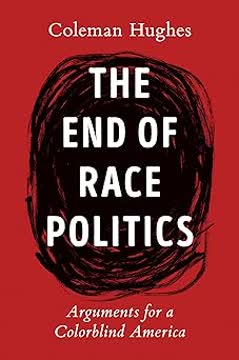
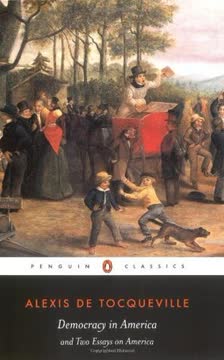


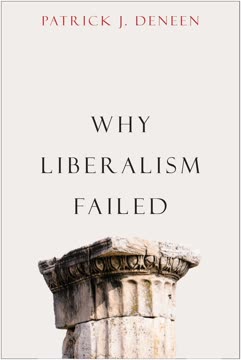
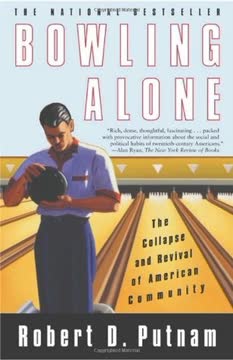
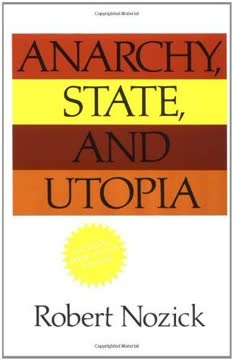
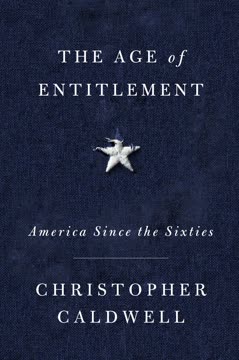
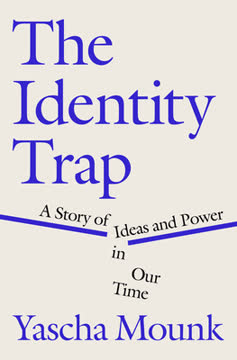
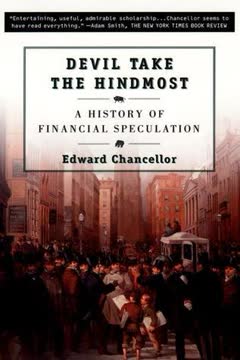
Download PDF
Download EPUB
.epub digital book format is ideal for reading ebooks on phones, tablets, and e-readers.
